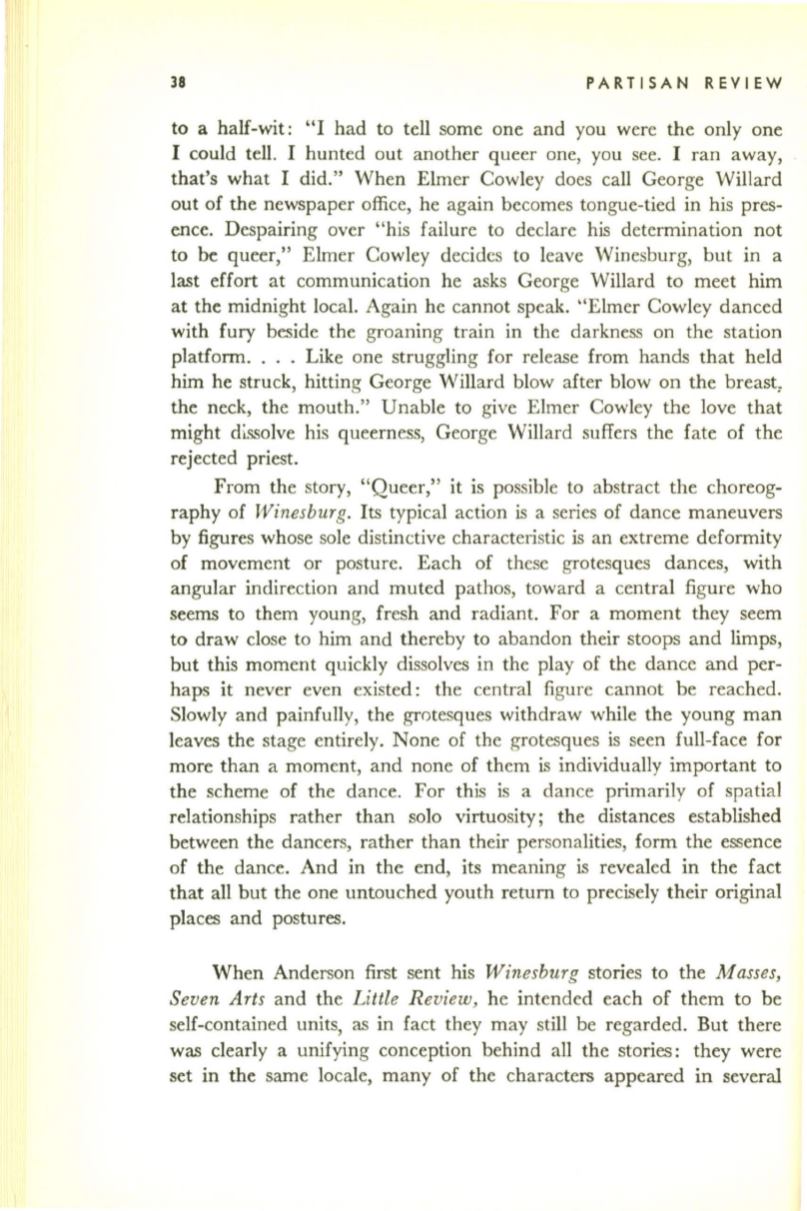
38
PARTISAN REVIEW
to a half-wit: "I had to tell some one and you were the only one
I could tell. I hunted out another queer one, you see. I ran away,
that's what I did." When Elmer Cowley does call George Willard
out of the newspaper office, he again becomes tongue-tied in his pres–
ence. Despairing over "his failure to declare his determination not
to
be
queer," Elmer Cowley decides to leave Winesburg, but in a
last effort at communication he asks George Willard to meet him
at the midnight local. Again he cannot speak. "Elmer Cowley danced
with fury beside the groaning train in the darkness on the station
platform. . . . Like one struggling for release from hands that held
him he struck, hitting George Willard blow after blow on the breast,
the neck, the mouth." Unable to give Elmer Cowley the love that
might dissolve his queerness, George Willard suffers the fate of the
rejected priest.
From the story, "Queer," it is possible to abstract the choreog–
raphy of
Winesburg.
Its typical action is a series of dance maneuvers
by figures whose sole distinctive characteristic is an extreme deformity
of movement or posture. Each of these grotesques dances, with
angular indirection and muted pathos, toward a central figure who
seems to them young, fresh and radiant. For a moment they seem
to draw close to him and thereby to abandon their stoops and limps,
but this moment quickly dissolves in the play of the dance and per–
haps it never even existed: the central figure cannot be reached.
Slowly and painfully, the grotesques withdraw while the young man
leaves the stage entirely. None of the grotesques is seen full-face for
more than a moment, and none of them is individually important to
the scheme of the dance. For this is a dance primarily of spatial
relationships rather than solo virtuosity; the distances established
between the dancers, rather than their personalities, form the essence
of the dance. And in the end, its meaning is revealed in the fact
that all but the one untouched youth return to precisely their original
places and postures.
When Anderson first sent his
Winesburg
stories to the
Masses,
Seven Arts
and the
Little Review,
he intended each of them to be
self-contained units, as in fact they may still be regarded. But there
was clearly
.a
unifying conception behind all the stories: they were
set in the same locale, many of the characters appeared in several


